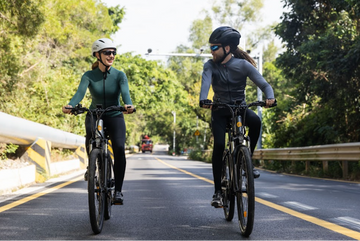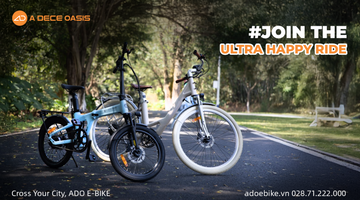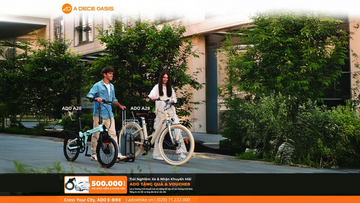
The average speed of a new cyclist is about 22.4km/h and this speed will change based on your training, from steep terrain, many corners… So don't feel discouraged. when you find yourself lagging behind those who practice for a long time. Here ADO E-bike shares with you some effective climbing techniques.

- Use the correct cassette:
Using the right cassette to match the slope you need to conquer will help you save energy as well as achieve top speed.
For the pass sections, the chain needs to be larger than normal. Note that you should not only use one cassette to go all the way and when changing the cassette, you should change it before you need to to avoid trying too hard, because the cassette is small, losing momentum ...
You should use a 25 or 27 cassette as the largest gear for the pass sections. Gears 21 or 23 are for everyday use.
- Keeping Endurance:
Inexperienced riders are often hasty, exerting all their strength when entering the slope and then exhausted before reaching the top. With this form only makes your heart rate increase faster, blood pressure increases, your muscles become tight, consuming more energy than when pedaling slowly but evenly when entering the foot of the pass.
If you feel tired and weak while climbing the mountain, you should go up to 1 cassette and continue pedaling but more slowly. You should only pedal with your strength, use small discs, large cassettes and pedal evenly (rather than pedaling at high speed).
- Sitting on the saddle:
With the movement of standing up, pedaling your body weight all the way down to the pedals, helping you to have more energy. However, you will use 10-12% more energy than usual, more because your pelvis is not in contact with the saddle, which means you have to work harder because of the center point of the spine. change as you pull the pedal up and down.
Product reference:
When pedaling standing, you put all your body weight into the muscles of your legs while sitting pedal will reduce the pressure on your legs. During the climb, sitting on the saddle will help you
- Consumes less energy, heart rate about 8% lower at all speeds
-
Use your glutes and hips to your advantage
To be able to practice the process of climbing uphill while still sitting in the saddle, you can do the following -
Pedal hard and quickly climb a short slope in a sitting position
- Upgrading to a medium slope: Pedal hard at the bottom of the slope using a large gearshift. Do not let the cadence slow down near the top, but use the gear so that it turns 90 rpm. Exercise regularly to increase leg strength.
You can flexibly combine sitting and standing positions when climbing slopes to increase muscle strength
- Cycling Pose:
Bending your back towards the handlebars is only effective on straight roads, but going uphill is different because of the aerodynamic drag, you'll generate the most energy when sitting upright.
When riding, many people often choose to hold the upper part of the handle - east, about 50 - 75mm from the center of the pontant, when the distance is large, the corn will not squeeze the chest, making it difficult to breathe and remember to keep the elbows slightly bent to can relax while pedaling.
When pedaling correctly or when you need to accelerate, grasp the top of the swingarm. And when going downhill, should hold the lower part of the handle - east (keep the wrist straight) for an aerodynamic advantage. Absolutely do not lie on the handlebars because you will be far away from the handbrake.
You need to try to keep your body balanced even when the bike is shaking, so pull the handle - freeze when your foot is down. When you let your body move a lot, you will lose energy. Your shoulders arch back, widening your chest, limiting the body's breathing regulation process.

- Respiratory:
During the climb, breathing is very important, so take a deep breath for a few steps, then breathe heavily and try to breathe evenly and rhythmically with the cadence, so the amount of oxygen will enter your body more. deeper and deeper




